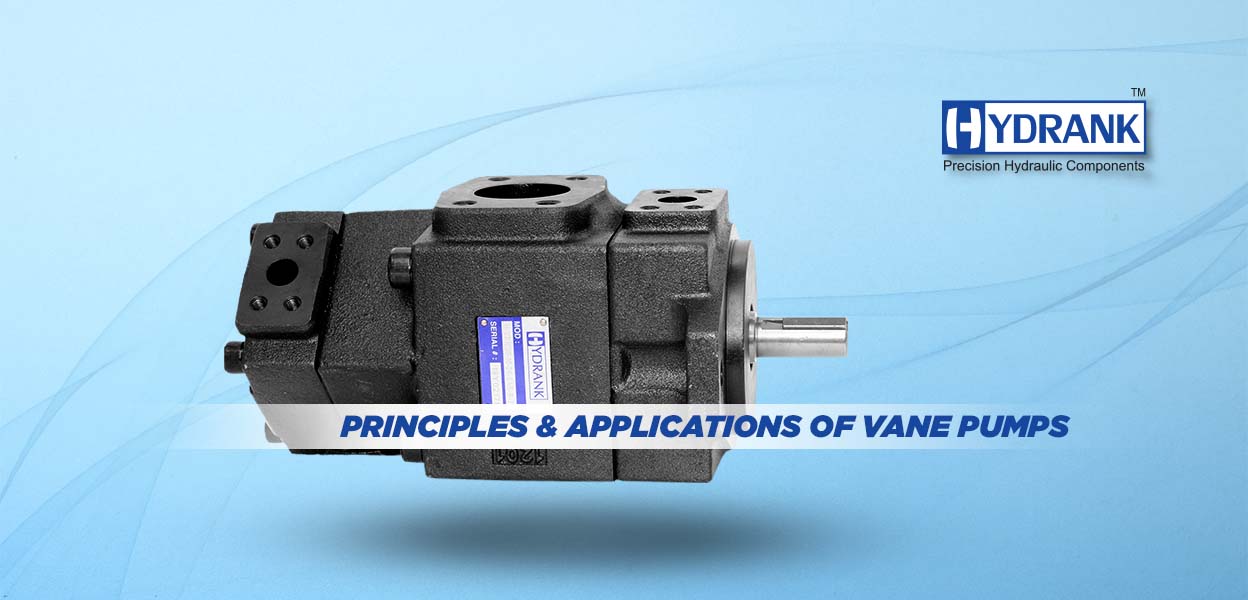-
Vane Pumps: Understanding the Principles and Their Practical Applications.

A vane pump is a type of positive displacement pump that uses a rotor with sliding vanes to create a vacuum or positive pressure in the pump chamber. This design provides several benefits, including high efficiency, low noise, and low pulsation. Vane pumps are commonly used in a variety of industries, including automotive, chemical, and hydraulic systems. In this blog post, we will explore the principles and applications of vane pumps.
Principles of Vane Pumps
The basic principle of a vane pump is to use a rotating rotor with vanes that slide in and out of the rotor to create a vacuum or positive pressure in the pump chamber. The rotor is typically mounted off-center in a circular casing, and the vanes are held against the casing by centrifugal force. As the rotor turns, the vanes slide in and out of the rotor, creating a series of small chambers that move fluid through the pump.
One of the key advantages of vane pumps is their ability to maintain a consistent flow rate, regardless of changes in pressure or viscosity. This is due to the positive displacement design, which ensures that a fixed amount of fluid is moved with each revolution of the rotor. Additionally, vane pumps are able to handle a wide range of fluids, from thin liquids to high-viscosity fluids like grease and oil.
Vane Pump Working
A vane pump is a positive displacement pump that uses vanes (blades) mounted on a rotor to move fluid through the pump. The rotor is eccentrically mounted within a cylindrical cavity, creating crescent-shaped spaces between the rotor and the cavity wall. As the rotor turns, the vanes slide in and out of these spaces, creating expanding and contracting volumes that draw in and then expel the fluid.
When the vanes slide out, they create a larger volume in the cavity, which draws fluid in through the pump inlet. As the rotor continues to turn, the vanes slide back in, decreasing the volume and pushing the fluid out through the pump outlet. The vanes are usually made of a self-lubricating material such as carbon or graphite, and they maintain contact with the cavity wall to create a seal that prevents fluid from leaking back into the inlet.
Vane pumps are known for their relatively low noise levels and smooth flow, and they are commonly used in hydraulic systems, fuel transfer, lubrication, and other industrial applications.
Applications of Vane Pumps
Vane pumps are used in a variety of applications across many industries. Some of the most common applications include:
- Automotive Industry: Vane pumps are commonly used in automotive applications, such as power steering systems, engine oil pumps, and transmission fluid pumps. In power steering systems, vane pumps help to provide the hydraulic pressure needed to turn the wheels, while in engine oil pumps, they help to circulate oil throughout the engine to lubricate moving parts.
- Chemical Industry: Vane pumps are used in the chemical industry to move a wide range of fluids, including acids, bases, and solvents. They are ideal for chemical applications because they are able to handle corrosive fluids without corroding themselves.
- Hydraulic Systems: Vane pumps are commonly used in hydraulic systems, where they help to move hydraulic fluid through the system to power actuators and other hydraulic components. They are often used in mobile hydraulic applications, such as construction equipment and agricultural machinery.
- Industrial Applications: Vane pumps are used in a variety of industrial applications, such as lubrication systems, fuel transfer systems, and paint sprayers. They are also used in printing presses, where they help to provide the pressure needed to transfer ink from the plate to the paper.
Exploring the Importance of Modular Valves and Vane Pumps in Fluid Power Systems.
Modular valves, variable vane pumps, double vane pumps, and triple vane pumps are all important components in the world of fluid power systems. These devices work together to provide efficient and effective hydraulic power to a wide range of industrial applications.
Modular valves are a type of hydraulic valve that is designed to be easily interchangeable with other valves in a system. They typically feature a standardized interface that allows them to be quickly and easily swapped out, making them an ideal choice for applications that require flexibility and customization.
Variable vane pumps are another key component of fluid power systems. These pumps are designed to provide variable flow and pressure, which makes them ideal for applications where the demand for fluid power varies over time. By adjusting the angle of the vanes within the pump, the flow rate can be adjusted to meet the needs of the system.
Double vane pumps and triple vane pumps are variations on the basic vane pump design. Double vane pumps feature two sets of vanes within a single pump housing, which allows for increased flow rates and improved efficiency. Triple vane pumps take this concept even further, with three sets of vanes within a single housing. This design offers the highest flow rates and efficiency of any vane pump configuration.
Whether you’re looking for modular valves, variable vane pumps, double vane pumps, or triple vane pumps, it’s important to choose the right components for your specific application. With the right combination of components, you can create a fluid power system that is efficient, reliable, and cost-effective.
Final Takeaway
In conclusion, vane pumps are a versatile and efficient type of positive displacement pump that is used in a wide range of applications across many industries. Their unique design provides several advantages, including high efficiency, low noise, low pulsation, and the ability to handle a wide range of fluids. As technology continues to advance, vane pumps will continue to play.
India's Largest Hydraulic Vane Pump Supplier
contact us: +91 98989 09148
Delivery
Prompt and accurate delivery
Client Servicing
Pro after-sales customer support
Quality assurance
Top quality standards
Export
More then 10 countries
